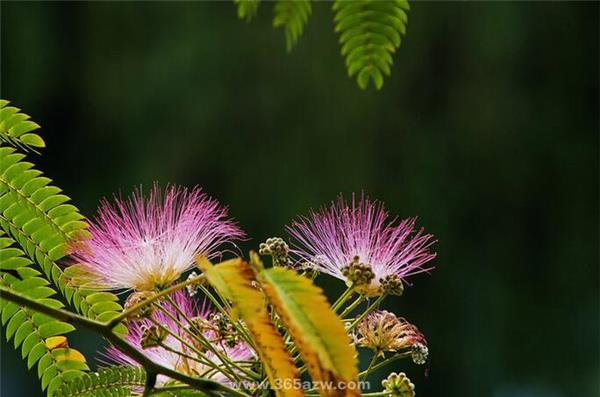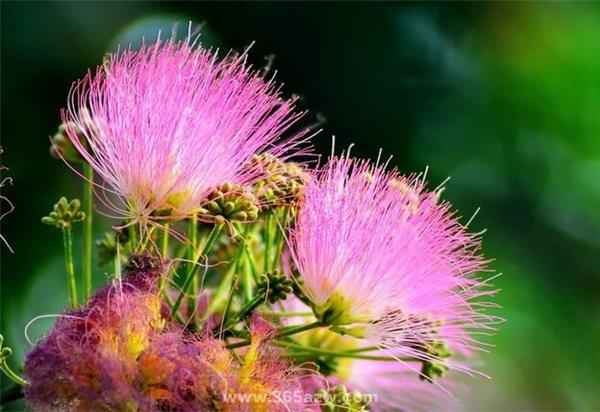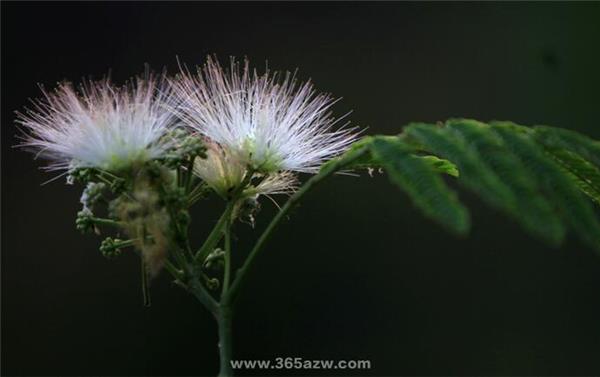Matters needing attention in bitter love flower culture
Bitter flowers are what we often say in our lives. When planting albizzia flowers, we must pay attention to the supply and demand of the growth environment. Today, let's take a look at the problems related to the cultivation of bitter flowers.

Bitter flowers for the head, wrinkled into a ball. Flowers slender and curved, long 0.7~1cm, yellowish brown to yellowish brown, shortly pedicellate. Calyx cylindric, apex 5-denticulate; Corolla tube about 2 times as long as calyx tube, apex 5-lobed, lobes lanceolate; stamens numerous, filaments slender, yellowish brown to yellowish brown, lower connate, upper separate, protruding from Corolla tube. The breath is slightly fragrant and the taste is light. Bitter flowers, also known as velvet flowers, bitter flowers, night flowers, night flowers, July fire, a tree of green leaves and red flowers, Cuibi swaying, bringing a little coolness, she approached her, but she gladly blushed, like the red lips of a shy girl, and like the blush of a shy girl, it was really pleasing to the eye, and her anger disappeared.
Bitter flower planting life habits:
Sunshine
Bitter flower is a light-loving tree species, slightly shade-tolerant, so pay attention to provide adequate sunlight during the growing period, but also pay attention to shade when the summer light is too strong.
Temperature
Bitter flower likes a warm environment, but its cold resistance is so strong that it does not need to move into a greenhouse in winter in the south.
Soil
The requirement of bitter flower soil is not strict, but the fertile, moist, well-drained sandy loam and limestone loam are the best.

Water and fertilizer management
Bitter flowers are resistant to dryness, not resistant to waterlogging, do not water too much during maintenance, so as not to cause waterlogging and damage the root system. Bitter flowers can implement extensive management, the demand for water and fertilizer is not very high, even in barren areas may grow very exuberantly. But it should be noted that it does not like noise and dust, so it needs to keep a good pass on it when breeding.
Disease control of bitter flower
Disease prevention and cure
The common diseases are Fusarium wilt and canker. When transplanting, reduce the time of seedling emergence, transportation and planting, sterilize and disinfect the roots before planting, spray 40% carbendazim wettable powder 500 times, or 65% zinc wettable powder 500 times; when transplanting, 10% copper sulfate solution can be dipped in the root, and growth regulators such as rooting powder can be sprayed at the same time to promote root germination and growth. For the truncated branch section, apply protective agent to prevent the invasion of bacteria. The trunk can be sprayed or smeared with 70% methyl thiophanate wettable powder and 60% doxorubicin wettable powder 100 times, or 14.5% doxorubicin water-soluble powder, 40% pentachloronitrobenzene powder 300 times, and conventional concentrations of pesticides such as Kangkuning, methyl thiophanate and carbendazim can be used to irrigate the soil, once every 8 days or so, 3 times in a row for 4 times can effectively curb the spread of the disease and gradually restore the plant. On the other hand, the 300-fold solution of 70% topiramate wettable powder was injected into the plant by means of infusion to improve the curative effect. While taking the above measures, 40% Formearsine 50 times solution and 40% pentachloronitrobenzene powder 300 times solution were irrigated to the tree hole and the surrounding soil to prevent the spread of germs.

Pest control
Insect pests include cotton scale, longicorn beetle, inchworm and leafhopper. 65% buprofezin wettable powder 800-1000-fold spray can be used to control cotton-blowing scale. During the nymph occurrence period, leafhoppers were sprayed with 10% imidacloprid 2000ml 3000 times, 1.8% Averyclovir 2000 times 3000 times and 40% omethoate EC 1000. 1500 times liquid or 20% fenvalerate 2000 times solution and 20% fenvalerate EC 3000 times solution were compared, and good control effects were obtained.

The above is the introduction of bitter flower culture, friends who want to cultivate bitter flower can be used as a reference.
Related
- Wuhan Hospital Iron Tree Blooming Result Was Instantly Frightened by the Gardener Master
- Which variety of camellia is the most fragrant and best? Which one do you like best?
- What is the small blue coat, the breeding methods and matters needing attention of the succulent plant
- Dormancy time and maintenance management of succulent plants during dormancy
- Minas succulent how to raise, Minas succulent plant pictures
- What are the varieties of winter succulent plants
- How to raise succulent plants in twelve rolls? let's take a look at some experience of breeding twelve rolls.
- Attention should be paid to water control for succulent plants during dormant period (winter and summer)
- Watering experience of twelve rolls of succulent plants
- Techniques for fertilizing succulent plants. An article will let you know how to fertilize succulent plants.



